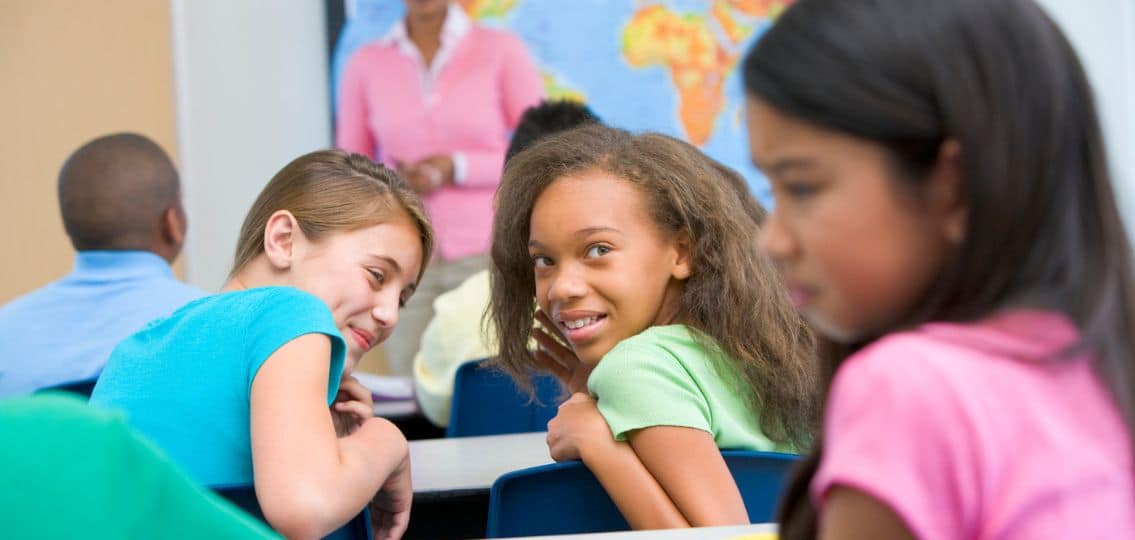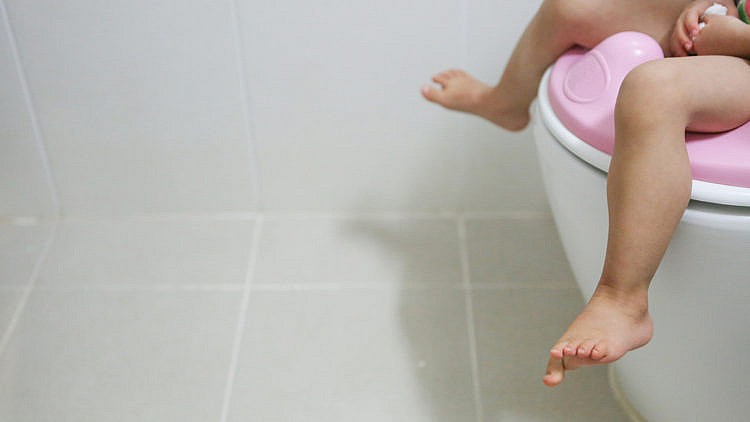
By Jaimie Seaton
Nicole Roder describes middle school as the worst years of her life. She was constantly bullied by a group of girls who shoved her in the hallways and cornered her in the locker room, where they threatened more physical violence. She never told an adult.
Instead, Roder, now 43 and a mother of four, suffered her middle school bullying in silence, and says she never hit back because she was scared it would escalate the situation.
“I think if I had hit back it would have turned into a great big fight; it’s probably what they were looking for,” Roder says.
A few years later, when Roder was attacked at a festival in high school, she took a different approach. Knowing there was no chance she’d win a fight, Roder walked to the home of an older friend.
“She was probably the toughest girl I’ve ever met in my life,” Roder says. “I brought her back to the festival, and she walked up to them and told them they better leave me alone, and they did. They never bothered me again.”
Roder was lucky that she had an older (and tougher) friend to stick up for her and teach her how to handle bullying, but most kids are left to deal with altercations on their own. That doesn’t mean they have to be victims, and it doesn’t mean they have to respond to aggression with a fist.
What to Do About Bullying
Conflicts vs. bullying
First, figure out whether your teenager is dealing with a conflict or bullying, says Barbara Coloroso, a bullying expert and author of numerous books on the subject, including The Bully, the Bullied, and the Bystander: From Preschool to High School—How Parents and Teachers Can Help Break the Cycle. “Conflicts you help kids resolve; bullying you stop,” Coloroso says. “It’s our job to teach kids how to manage their conflicts nonviolently, and we have to teach them how to do that at a very young age.”
“We’re quick to label everything as bullying,” says Katie Hurley, a psychotherapist specializing in children and teens and the author of No More Mean Girls: The Secret to Raising Strong, Confident, and Compassionate Girls. Conflict among teens is normal. Bullying is not. Bullying involves an imbalance of power and a specific pattern of behavior.
Hurley adds, “Sometimes a conflict between two teens has been brewing for quite some time and because it wasn’t dealt with, it keeps bubbling up like a volcano, and then you have an explosion.” She says, “Kids get into conflicts all the time and don’t necessarily have the tools to resolve them. Conflict resolution skills are life skills.”
Conflict resolution
Kids know when a conflict is brewing and need to learn the skills to deal with it before it escalates, says Hurley. She advises kids to do two things: own their part and take the discussion offline.
“You have to own your 2%. Even if it’s 98% someone else’s fault, you have to find what part is yours,” Hurley says. “When there’s a problem, get face to face and use ‘I’ statements. ‘I feel like something’s wrong; what are you feeling? Did I miss something? Please tell me.’”
“Keep your voice calm, retain good eye contact, and ask follow-up questions. The whole key to getting through a conflict is staying calm and being willing to listen to the other person.”
Hurley adds that it’s important to go in with an open mind and be curious. She advises teens to practice these conversations with an older sibling, parent, or another trusted adult who can give honest feedback.
Assertiveness vs. aggression
Let’s say your teen is not facing a two-sided conflict, but instead is constantly harassed at lunch. Another kid is shoving them or taking their french fries. What should they do?
“Just keep calm, make eye contact, and say ‘Don’t touch me’ or ‘Don’t take my fries,’” Hurley says.
She added that when kids don’t respond with assertiveness, they can internalize what’s happening and it builds up. Mirroring is one alternative to internalizing. Say your son has long hair and another kid is teasing him about it: Hurley advises kids to simply mirror back what they’re saying: ‘Why do you have such short hair?’ or ‘Your hair’s really short.’
“That’s not teasing or bullying, but mirroring what the kid is saying,” Hurley says. “There’s always going to be one kid who leads the pack, and everyone falls in line. When one kid is willing to stand up and be assertive, the other kids will start to stand down. The bully is looking for the person who will keep internalizing.”
Self-defense
When it comes to confronting physical attacks—whether caused by conflict or bullying—both Coloroso and Hurley recommend learning and using self-defense.
“Defend yourself, yes; attack, no,” Coloroso says. “There’s a difference between an offensive move and a defensive move, and we need to teach young people defensive moves—how to swing their arm to block the punch that’s coming and walk away.”
Hurley adds that if a kid is attacked or even feels under threat, they should ask the nearest person for help. A bystander who intervenes can often stop the bullying. According to stopbullying.gov, bystanders can effectively stop bullying 57% of the time.
Get vocal, not physical
If speaking up, defending yourself, or asking peers for help isn’t working, Coloroso encourages kids to go to a trusted teacher or school guidance counselor for help. “Bullying tends to happen under the radar of adults,” Coloroso says, “and if nobody’s telling us about it, we won’t know it’s going on.”
“We want to avoid physical altercations,” Hurley says. “It’s dangerous and not a healthy way to work through conflict.”
For more information, visit Stomp Out Bullying (stompoutbullying.org) or Stop Bullying (stopbullying.gov)

 PARENTING TIPS
PARENTING TIPS PREGNANCY
PREGNANCY BABY CARE
BABY CARE TODDLERS
TODDLERS TEENS
TEENS HEALTH CARE
HEALTH CARE ACTIVITIES & CRAFTS
ACTIVITIES & CRAFTS

